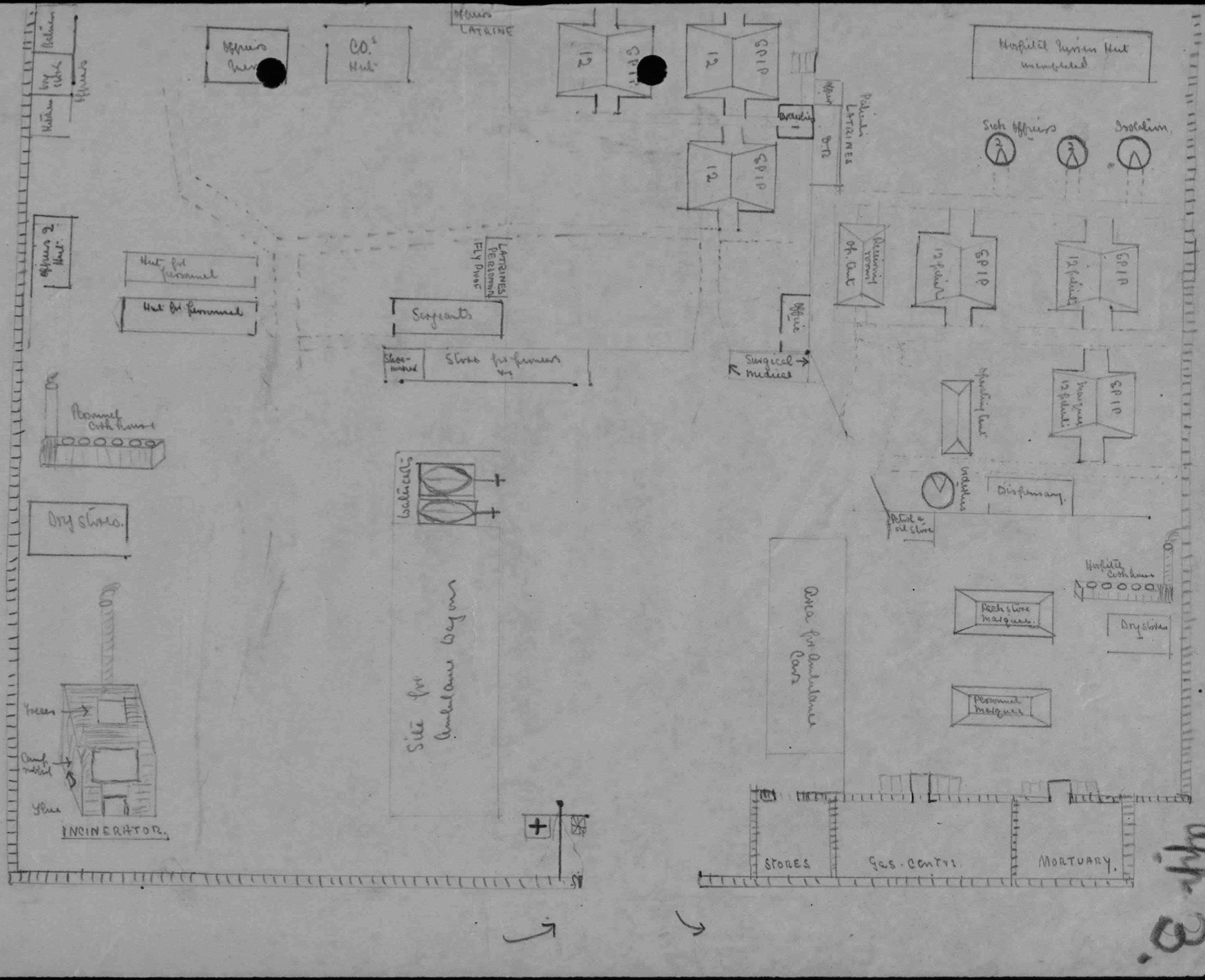Sunday October 27th, 1918
Brigade Church parade. King’s Band plays. Went to Encores.
18th King’s Liverpool
The whole Brigade must have gone to church today. The term ‘Church Parade‘ usually meant that attendance was mandatory. The 18th King’s Liverpool Battalion is one of the Battalions in the 199th Brigade. It is therefore likely that it was this Battalion’s band that was playing today. They were obviously very good as the performance went to encores.
Main Dressing Station
The day before Frank was released back to the 9th Battalion, he was in the Divisional Sick Collecting Station at Maretz. Only a week before, the station at Maretz had been opened as a Main Dressing Station (MDS).
The MDS is part of the chain of evacuation for the wounded and sick. It is the HQ of the Field Ambulance and the last stage in the line before a soldier is sent to a Casualty Clearing Station or beyond.
‘The object throughout is to avoid the unnecessary evacuation of cases that can be treated at the front, for a soldier, once evacuated, is likely, however quick his recovery, to be lost to his unit for a considerable time, since any patient sent further to the rear [than the MDS] … ceases for the time being to belong to the army in which he had previously been serving, and cannot be restored to it except by passage through a regulated channel. Every patient evacuated from a field ambulance has what is known as a field medical card substituted for his regimental label.’¹
The emphasis of its role is dependent upon the combat status of the troops it supports. In addition to its part in the chain of evacuation, the MDS is responsible for organizing the treatment of those who require longer-term medical help, managing any outbreaks (e.g. scabies) and meeting dental or optical needs.
Its layout and purpose is similar to that of an Advanced Dressing Station, however it is much larger and the equipment more sophisticated. It may be housed in buildings (such as schools) or in a network of tents.
Main Dressing Station’s Layout
Thanks to the 2/2nd East Lancs Field Ambulance (ELFA), we have a very good sketch of a Divisional Main Dressing Station at Templeux La Fosse in May 1917.²
At the top left of the map, are the officers quarters, including their latrines and kitchens. The cookhouse for the other personnel, dry stores and incinerator are in the bottom left. In the middle there is the Sergeant’s quarters (unfortunately next to some latrines) together with the shoemaker’s hut and other stores. Continuing anti-clockwise, there are two large sites for the ambulance wagons / carts and water carts. Followed by more stores, a gas centre (presumably for gas victims) and a mortuary just below two marquees for personnel, a dry store and the hospital cook house. There is also a small store for petrol and oil supplies.
The top right of the sketch show the guts of the MDS: the dispensary, operating tents/receiving rooms, patients’ latrines, and small tents for sick officers and isolation cases. There are also six large rectangular marquees labelled EPIP, each for 12 patients. There is some debate about what ‘EPIP’ stands for. However, ‘Whatever the exact original meaning of EPIP, it denotes a marquee-type tent about 18 ft long with removable sides’³

9th Battalion War Diary – 27th October 1918 – Elincourt
Brigade Church Service.
References & Further Reading
¹ RAMC and its Work, vlib.us
² ‘Divisional Main Dressing Station, Templeux La Fosse, May 16th, 1917′, National Archives, Ref WO 95/2652/2, Crown copyright
³ 63 General Hospital, Salonika thread on the Great War Forum


